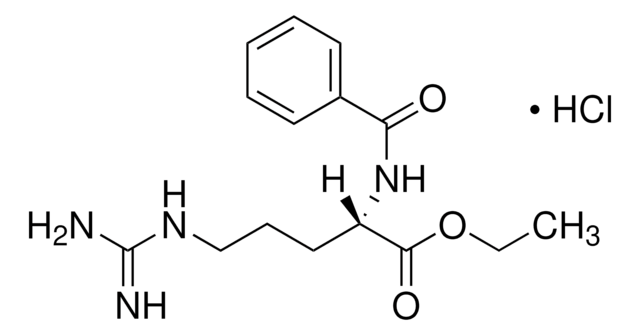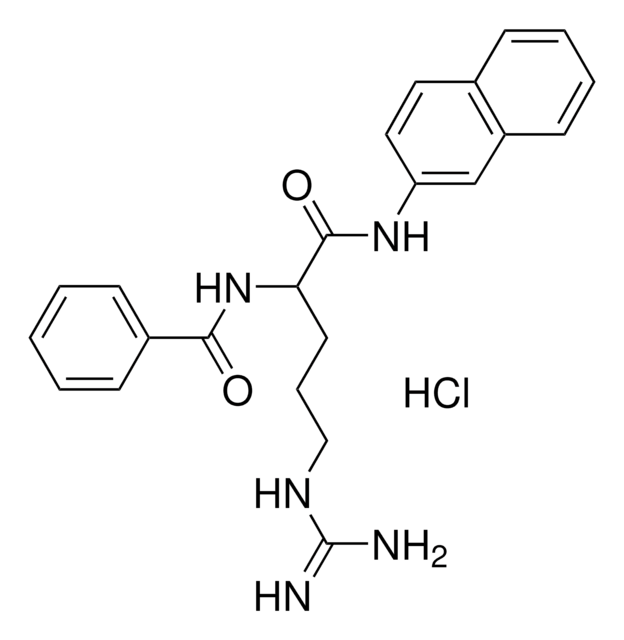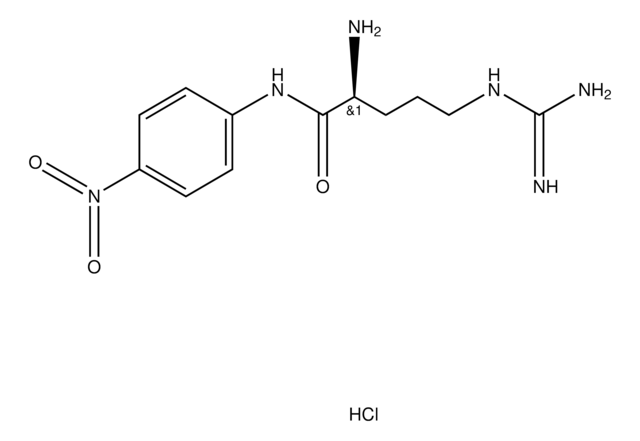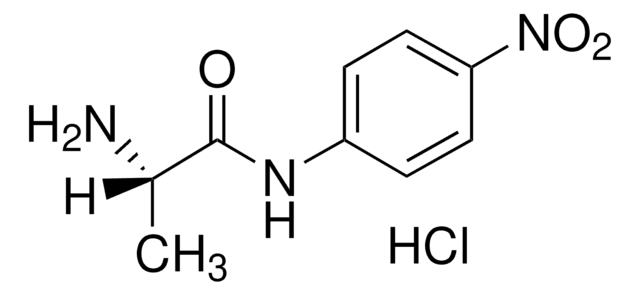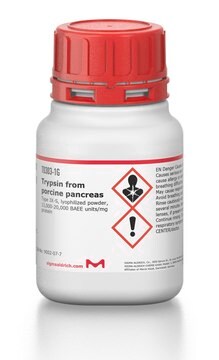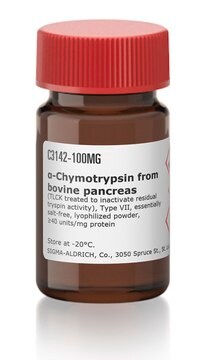B3279
Nα-Benzoyl-L-arginine 4-nitroanilide hydrochloride
proteolytic enzyme substrate, chromogenic, >98% (TLC), powder
Synonym(s):
L-BAPA, L-BAPNA, BANI
About This Item
Recommended Products
product name
Nα-Benzoyl-L-arginine 4-nitroanilide hydrochloride, >98% (TLC)
Quality Level
assay
>98% (TLC)
form
powder
solubility
acetone: water (1:1): 40.00-51.00 mg/mL, clear, colorless to yellow
storage temp.
−20°C
SMILES string
Cl[H].NC(=N)NCCC[C@H](NC(=O)c1ccccc1)C(=O)Nc2ccc(cc2)[N+]([O-])=O
InChI
1S/C19H22N6O4.ClH/c20-19(21)22-12-4-7-16(24-17(26)13-5-2-1-3-6-13)18(27)23-14-8-10-15(11-9-14)25(28)29;/h1-3,5-6,8-11,16H,4,7,12H2,(H,23,27)(H,24,26)(H4,20,21,22);1H/t16-;/m0./s1
InChI key
DEOKFPFLXFNAON-NTISSMGPSA-N
Looking for similar products? Visit Product Comparison Guide
General description
Application
- to measure papain activity in spectrophotometric amidase assay
- to measure the inhibitory function of human cystatin C (HCC) on the protease activity of papain by colorimetric assay
- for trypsin
Substrates
Storage Class
11 - Combustible Solids
wgk_germany
WGK 3
flash_point_f
Not applicable
flash_point_c
Not applicable
ppe
Eyeshields, Gloves, type N95 (US)
Certificates of Analysis (COA)
Search for Certificates of Analysis (COA) by entering the products Lot/Batch Number. Lot and Batch Numbers can be found on a product’s label following the words ‘Lot’ or ‘Batch’.
Already Own This Product?
Find documentation for the products that you have recently purchased in the Document Library.
Customers Also Viewed
Our team of scientists has experience in all areas of research including Life Science, Material Science, Chemical Synthesis, Chromatography, Analytical and many others.
Contact Technical Service

